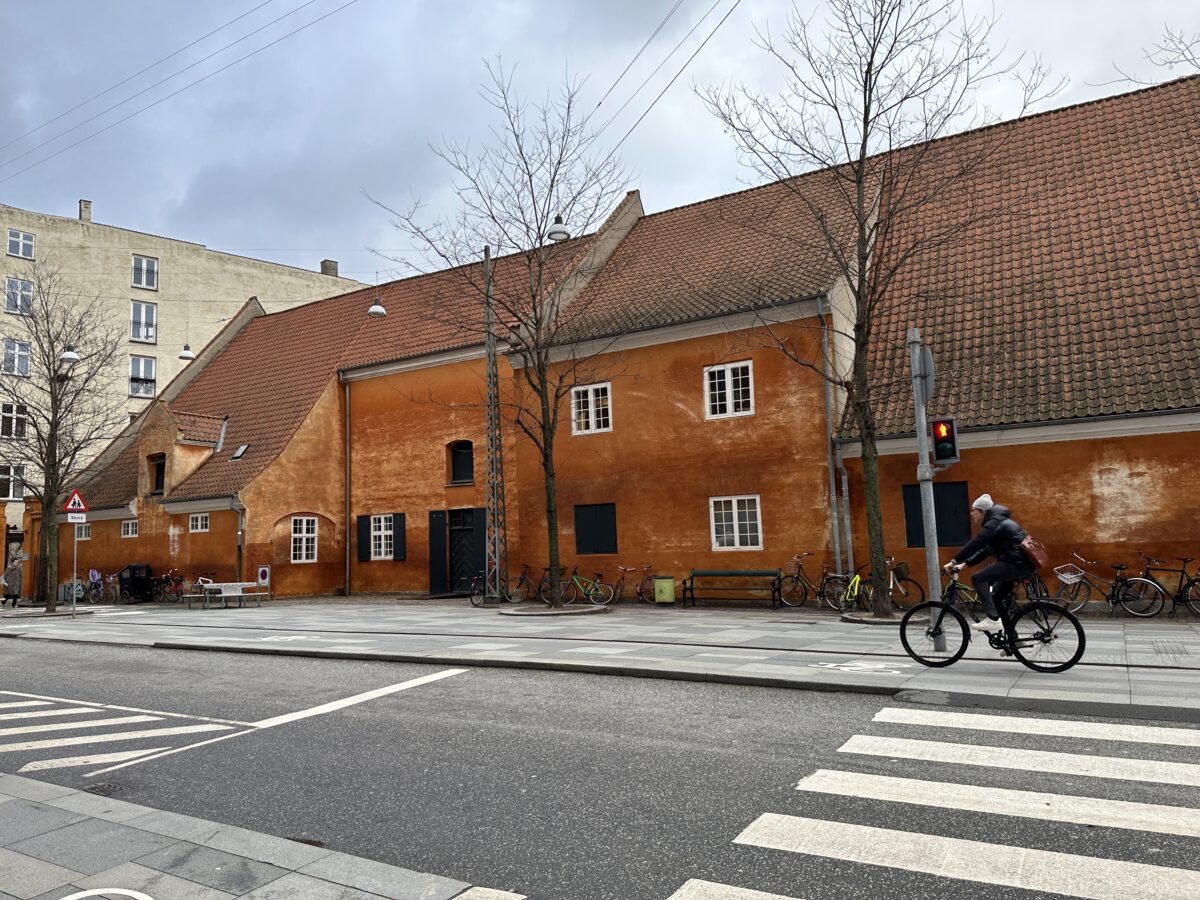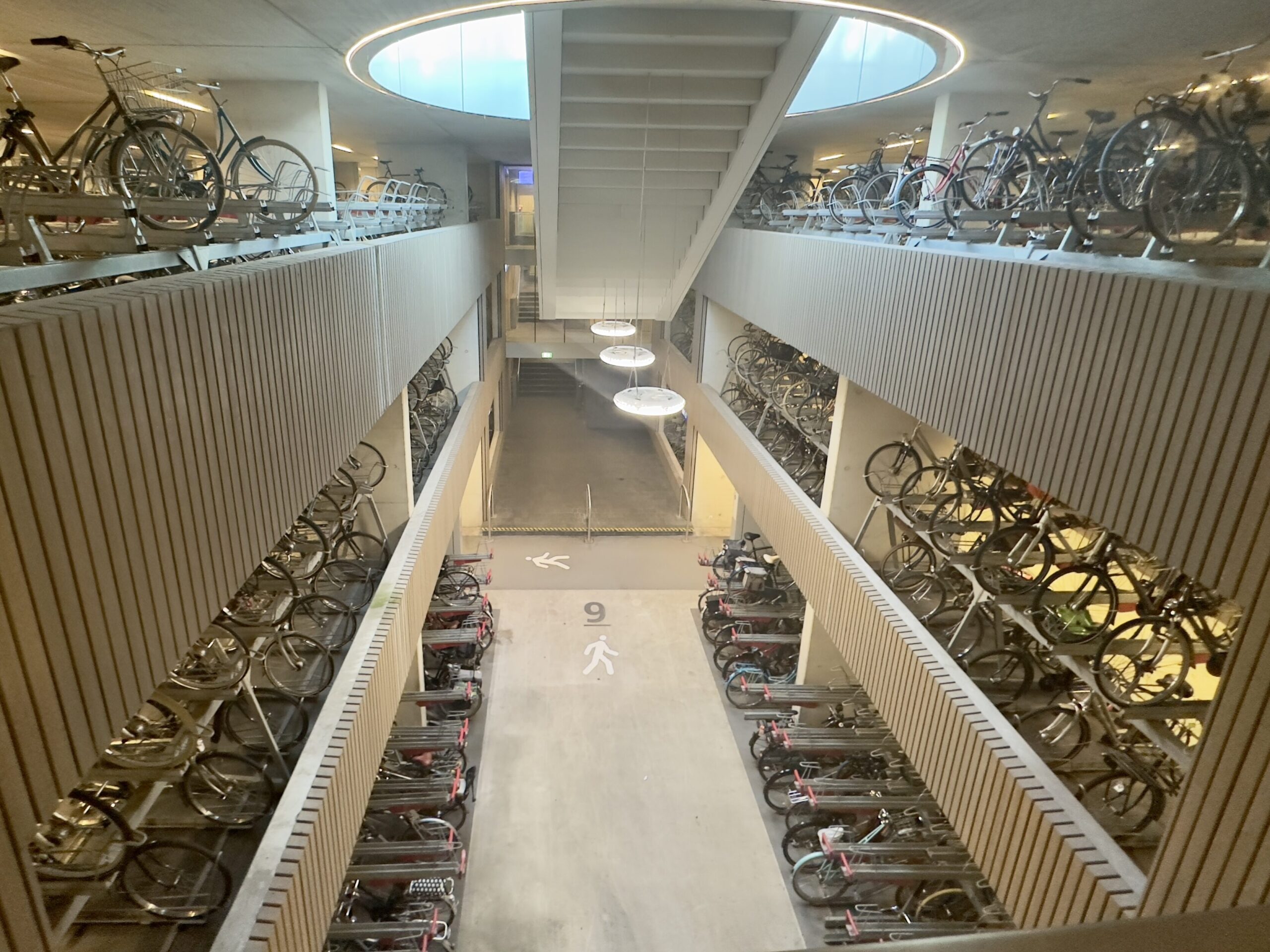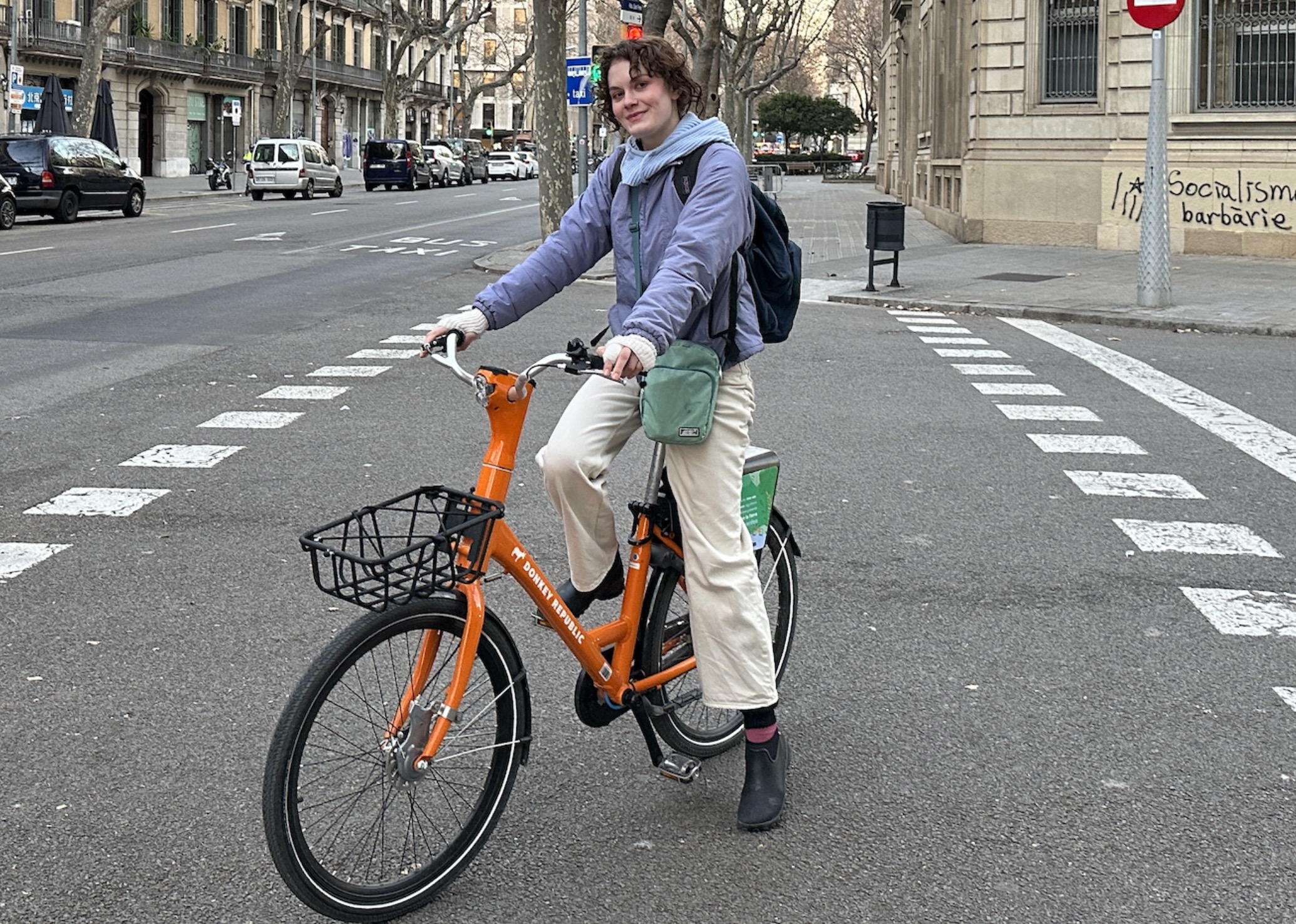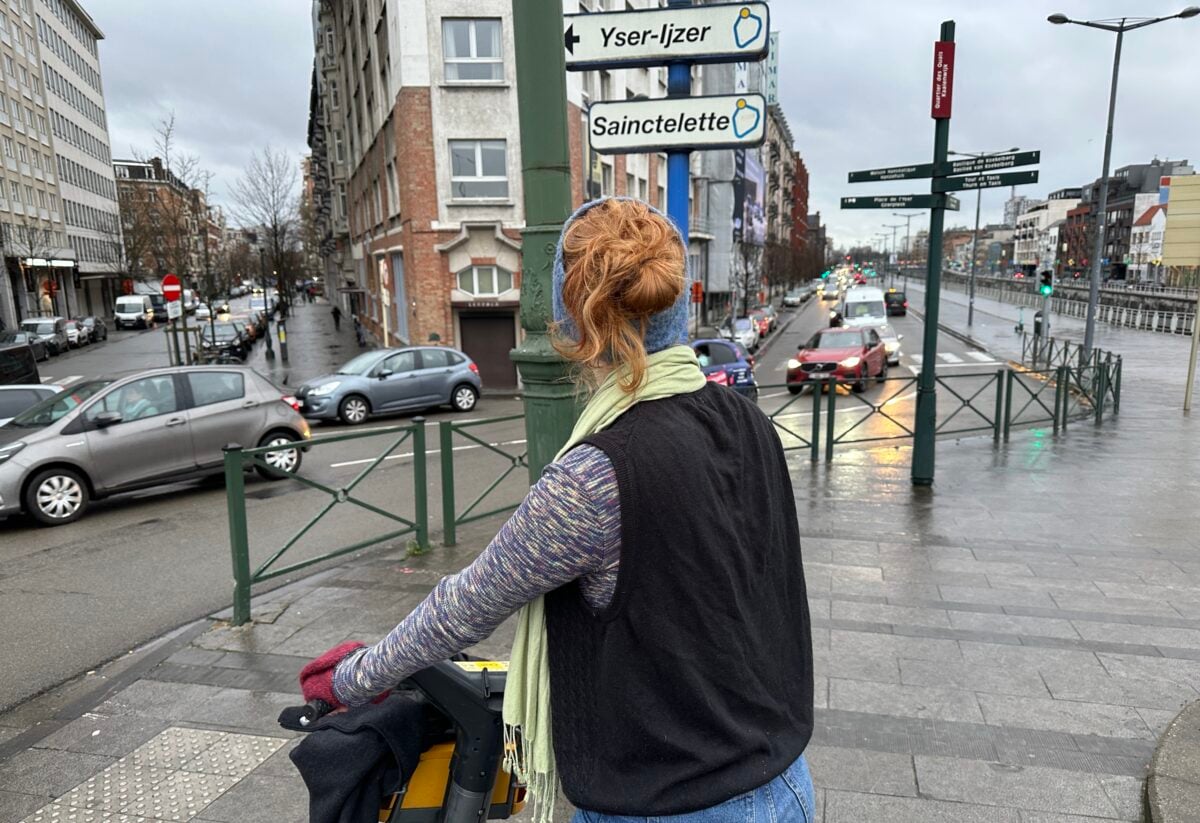I arrived back in Portland late Wednesday night and am trying to acclimate myself back to the city and figure out how to sum up the European trip I was on for the last month. I don’t think I’ll be able to put a neat little bow on it: my thoughts and feelings about everything I learned will come in waves as I get back to my real life. I’m sure I’ll reference my experience quite a bit in the next few months when the Portland Bureau of Transportation drops a new project plan or while waiting an inordinate amount of time for a TriMet bus to show up. (“They would never put up with this in Paris!”)
For now, though, I’ll do my best to draw some initial conclusions so I can pull myself out of Europe mode and get back to what’s happening on Portland’s streets. First, let’s get down to brass tacks about the bike infrastructure.
The quality of bike facilities varied widely between the cities I visited — I learned that the hard way when I took a Dutch/Danish approach to the more rough-and-tumble Parisian bike lanes — but I think there were lessons to be learned everywhere. Below are some that come to mind.
Grade separation is highly underrated


Even though I think I’m overall preferential to the vibes in Amsterdam compared to Copenhagen (or maybe Scandinavia in January is just too dark for me), there were some things about Copenhagen’s cycling infrastructure I thought were really ahead of the curve and made it feel just that much safer to bike in. This is mostly credited to the bike lanes that are on almost every street in the city, which are separated from car traffic not only with wide strips of curb and often a car parking lane, but also with elevation — a tactic I think is underutilized in Portland.
When a bike lane is separated from car traffic by a few inches of height, it adds just that extra bit of security for someone biking, especially if they’re traveling near high-volume and fast car traffic. It’s possible that safety is as much perceived as it is real, but feeling safe matters a lot for improving bike mode share and should not be overlooked. Copenhagen’s grade-separated bike lanes are also a few inches lower than the sidewalks, providing a distinction that helps combat conflict between people walking and biking.
I would like to see PBOT consider grade separation for new bike lane projects, which I think would really increase the appeal of plans like the newly-announced bikeway on NE Skidmore. The problem is that implementing this now would result in our bike network being more disjointed than it currently is, but that’s a trade-off I’d be willing to contend with.
Little things can go a long way



I understand the problems PBOT deals with when trying to improve our city’s bike infrastructure, and am willing to give them grace on many things: they’re up against a lot that’s out of their control. But there are some things the city could do right now to making biking better. And honestly, there’s no excuse for why we don’t have some of these.
One key example? Take the bike footrests or cycle rails I saw in Copenhagen. They give cyclists something to lean against while waiting at a red light. Copenhagenize.com‘s Mikael Colville-Andersen describes these as “a tiny detail. No bells and whistles, just a simple idea to make a tiny fraction of the day a little bit easier for a small percentage of the cycling citizens of the city. Which is precisely why it’s brilliant.”
Installing these rails at intersections with high bike traffic in Portland — like North Broadway and Williams, or Southeast Hawthorne and 11th, for instance — would not be difficult or expensive, and they would be much-appreciated. This is the kind of thing that would really take Portland up a notch as a world-class bike city.
Bike parking is a world of its own


I have to be honest: I’m not sure that I really “get” the art of bike parking. It feels like an ecosystem that I haven’t quite been able to break into yet, and it’s also not something I’m typically that concerned about — but that might be because there are a lot of people on the case already so I don’t have to think about it.
Well, to those people I say thank you, because the bike parking iceberg goes deep, and providing nice bike parking facilities is a lot of work. I was struck by the enormity of the three-story bike parking garage in Utrecht, Holland — the biggest in the world — which offers 12,656 parking spaces and has digital signs alerting visitors how many spots are left. This is fantastic to me because it signals just how important biking is to the city’s residents and planners: the facility is right underneath the central train station and is much easier to access than car parking, indicating how Utrecht prioritizes transportation modes.
I stood on the top floor of the parking garage for a long time, watching people bike in and out in constant rotation, my mouth agape at the beauty of it all. After that, I started to notice bike parking a lot more, and I’m sure I’m going to maintain this energy going forward when I can’t find a spot outside Safeway even when there are dozens and dozens of empty car parking spaces. Thank you to the bike parking wonks, your work is highly appreciated and I will no longer take it for granted!
Maintenance absolutely must be prioritized


I know, I know, we never talk about it here on BikePortland, but PBOT has a maintenance issue. And considering maintenance staff are currently on strike and the bureau has a Sisyphean budget problem, it doesn’t seem like the issue is going to improve anytime soon. But it really, really needs to.
I was pretty relaxed about slipping and wiping out on black ice in Portland a couple months ago, but as I nurse my finger (which I seriously injured after I lost control on a big bike lane bump) back to health, I won’t be as calm about this going forward. What happened to me in Paris was a prime example of what happens when a city doesn’t pay close enough attention to the literal and proverbial cracks in the pavement, and it could’ve been a lot worse. Portland’s bike lanes have these same hazards and more. This needs to be a top priority.
Bike share systems are complicated
Portland’s Biketown gets its fair share of heat from advocates, particularly for a lacking inventory that forces people to walk long distances out of the way to rent a functioning bike. But as I attempted to rent bikes across Europe, I’m not sure I can say I came across a system that jumped out to me as a model we should emulate.
Many cities I visited have municipal bike share systems for city residents which seem to function very well. But these require jumping through some hoops and are inaccessible to people visiting. When I just wanted to rent a bike for a short trip, I used services like Bolt and Lime, which are expensive and sometimes just as inconvenient as getting a Biketown during peak hours.
Biketown could be better. But this is a hard business to get right, especially in the U.S., where we are culturally unaccustomed to doing a lot of public resource sharing generally. And as far as other U.S. cities go, New York’s electric Citibikes are ridiculously expensive — and apparently very difficult to rent, as I was unable to find a working e-bike when I was there a month ago. I think this industry is going to evolve quite a bit in upcoming years, and I really hope Portland can be on the front lines of that movement, because a great bike share system is so important.
(Try your best to) stay away from mythologizing
A major lesson I learned during my trip is that uncritically worshiping European infrastructure is ultimately unhelpful to improving the facilities we have at home. Though I know I have sung the praises of some of what I saw, I tried to do it in a way that wasn’t too reverent — and it can be a hard line to walk. No city is perfect, but some have systems that are evidently working much better to produce good results. We can get there too.
When I was biking around Brussels with my sister Kylie, she said she felt safer biking in Portland. (She lived here over the summer and was subject to my biking influence.) This really surprised me at first because I am often critical of Portland’s biking facilities. But once I lowered my Europe-colored glasses, I was able to see flaws in these European cities, and I saw where Kylie was coming from.
I love Portland, and I love biking here. We have a lot of good things; but we need to be better. I think we need to be able to take inspiration from great things happening around the world without venerating these places to a ridiculous degree. Put another way, we might make faster progress here if we don’t get so distracted with what they have over there.







